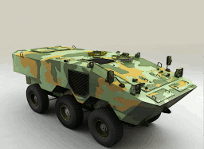Túlio escreveu:Zavva escreveu:
Eu estava querendo saber especificamente a respeito do SH.
Já que aqui foi o primeiro lugar vi as pessoas considerarem esta aeronave como 3a geração.
Abs
Isso não significa que estejamos necessariamente ERRADOS. Estava olhando dia desses uma foto em que dois F-18 apareciam voando juntos. A foto foi tirada do ângulo superior, estando um voando acima e o outro mais abaixo. Assim, comparar tamanho não dava. Queimei pestana até me dar conta que o avião que voava acima tinha LERX proporcionalmente maior. Sem usar lupa foi o que achei, além de pequenas modificações na asa. Uma vista lateral mostraria também entradas de ar diferentes. Uma frontal mostraria, além disso, pilones curiosamente enviesados (tortos, diria o PRICK). Engraçado isso, um avião tão pouco diferente ser um NOVO AVIÃO ao invés de simplesmente uma NOVA VERSÃO. Ah, os milagres do MARKETING...

![Cool 8-]](./images/smilies/icon_cool.gif)
Há coisas menos visíveis e mais importantes.
http://www.ausairpower.net/SuperBug.html
1.2 The F/A-18E/F Super Hornet
The Super Hornet is substantially a new aircraft, which shares only limited structural commonality with the F/A-18A-D family of fighters. While the F/A-18E/F forward fuselage is derived from the F/A-18C design, the wing, centre and aft fuselage, tail surfaces and powerplants are entirely new. The baseline avionic system is however largely derived from the F/A-18C, with planned growth through further evolved derivatives of the radar, EW and core avionic systems, and entirely new systems where appropriate.
The designation F/A-18E/F reflects the fact that the aircraft is derived from the F/A-18A-D, even if it is a significantly larger airframe design - the program was implemented as an Engineering Change Proposal (ECP) to avoid a costly demonstration program and fly-off, as has occurred with the F-22/YF-23 and JSF. A side effect of this idiosyncrasy in nomenclature is that the F/A-18E/F is frequently dismissed as just another Hornet, yet the aircraft is different in many respects.
From a design perspective, the most notable change in the Super Hornet is its size, designed around an internal fuel (JP5) capacity of 14,700 lb, or 36% more than the F/A-18C/E. This most closely compares to the F-15C, which has around 10% less internal fuel than the Super Hornet.
Sizing around a 36% greater internal fuel load, with the aim of retaining the established agility performance of the F/A-18C, resulted in a larger wing of 500 sqft area, against the 400 sqft area of the F/A-18C, a 20% increase. The consequent sizing changes result in a 30,885 lb empty weight (31,500 lb basic weight) aircraft, a 30% increase against the F/A-18C. Not surprisingly, the aircraft's empty weight is 8% greater than the F-15C, reflecting the structural realities of catapult launches and tailhook recoveries.
The larger F414 engine, a refanned and evolved F404 variant, delivers 20,700 lb static SL thrust in afterburner, which is around 8% less than the F100-PW-220 in the F-15C.
The simplest metric of the F/A-18E/F is that it is an F-15A-D sized F/A-18C derivative, optimised for the naval environment. The similarity in size between the F/A-18E/F and F-15A-D is no coincidence - as the original VFAX studies in the 1960s and 1970s showed, this is the optimal fighter size for the given combat radius. In effect, the F/A-18E/F is what the F/A-18A Hornet should have been from the outset, had it not been hobbled at birth by a budget driven bureaucracy.
Size is where the similarity between the Super Hornet and Eagle end, since the Super Hornet is optimised aerodynamically around the F/A-18A-D configuration, with a focus on transonic manoeuvre and load carrying performance, and carrier recovery characteristics. In terms of raw performance, the Super Hornet is very similar to the F/A-18C, but provides significantly better CAP endurance and operating radius by virtue of its larger wing and internal fuel load.
With three 480 USG drop tanks, full internal fuel, combat and reserve fuel allowances, 8 x AIM-120 AMRAAMs and 2 x AIM-9 Sidewinders, the aircraft has a point intercept radius in excess of 650 NMI, with some assumptions made about expended missiles. This is radius performance in the class of the F-15C.
Like the F/A-18A-D, the F/A-18E/F was designed from the outset for a dual role fighter bomber mission environment. The enlarged wings have three hardpoints each, typically loaded with a pair of 480 USG tanks inboard and weapons on the pair of outboard stations. The wingtip Sidewinder rail is retained.
A notable aerodynamic feature is a significantly enlarged strake design over the baseline Hornet, intended to improve vortex lifting characteristics in high AoA manoeuvre, and reduce the static stability margin to enhance pitching characteristics - Boeing cite pitch rates in excess of 40 degrees per second.
Structurally the Super Hornet is built largely from aluminium alloys, with extensive use of carbon fibre composite skins in the wings, and titanium in several critical areas. The design load factor limit of 7.5G is identical to the F/A-18A-D.
The most notable visual difference between the F/A-18A-D and F/A-18E/F, to the casual observer, are the engine inlets. These are are fixed in geometry, but using a rectangular geometry more akin to the F-15 design.
The inlets represent a key design optimisation intended to reduce the aircraft's forward sector radar cross section. The edge alignment of the inlet leading edges is designed to scatter radiation to the sides, and fixed fanlike reflecting structure in the inlet tunnel performs a role analogous to the mesh on the inlets of the F-117A, keeping microwave illumination off the rotating fan blades.
The F/A-18E aircraft makes considerable use of panel join serration and edge alignment. Close inspection of the aircraft shows considerable attention paid to the removal or filling of unnecessary surface join gaps and resonant cavities. Where the F/A-18A-D used grilles to cover various accessory exhaust and inlet ducts,
the F/A-18E/F uses centimetric band opaque perforated panels. Careful attention has been paid to the alignment of many panel boundaries and edges, to scatter travelling waves away from the aircraft boresight.
It would be fair to say that the F/A-18E/F employs the most extensive radar cross section reduction measures of any contemporary fighter, other than the very low observable F-22 and planned JSF. While the F/A-18E/F is not a true stealth fighter like the F-22, it will have a forward sector RCS arguably an order of magnitude smaller than seventies designed fighters. Since every deciBel of RCS reduction counts until you get into the range of weapon payload RCS, the F/A-18E/F represents the reasonable limit of what is worth doing on a fighter carrying external stores. None of the RCS reduction features employed in the F/A-18E/F are visible on any of the three Eurocanards, which raises interesting questions about the relative forward sector RCS reduction performance of these types.

Do ex-fotográfo da USAF:
Balanced survivability. This is not as hard to figure out as it sounds. One knows what the limits are that the Super Hornet can get into and out of. The Super has the ability to take battle damage, proven when Hornet family jets return to base after a mid air collision with horrific damage. The Block II Super Hornets has stunning avionics. It has a true fused and practical defensive avionics suite with real wide aspect jamming and the ability to hand off that jam emitting to the ALE-55 towed decoy. While not a stealth aircraft, it has an airframe that is tuned to it’s jamming gear. The defensive system has a better known baseline of what is necessary for the jamming gear work to be done.
http://worldwidewarpigs.blogspot.com/20 ... ornet.html











